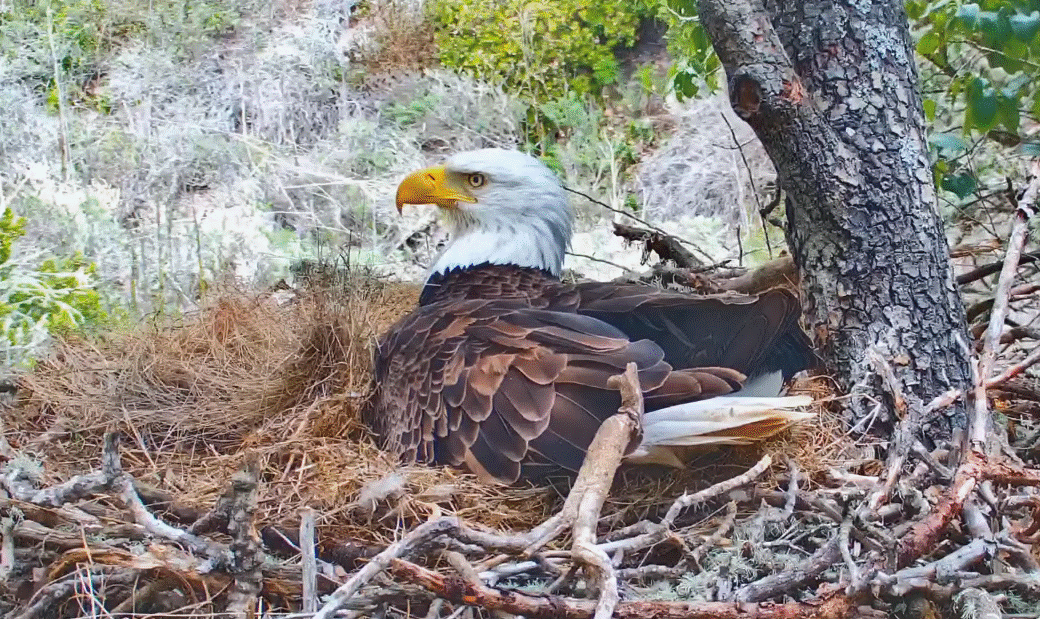What is an American bald eagle?
The bald eagle is a large bird of prey native to North America, known for its striking white head and tail, yellow beak, and dark brown body in adulthood. It’s a symbol of the United States, representing freedom and strength.
The term “bald” comes from an old English word, “balde,” meaning white, referring to their white head feathers, not hairlessness.

Frequently Asked Questions
How big are bald eagles?
Adults have a wingspan of 6 to 7.5 feet (1.8–2.3 meters) and weigh 6.6 to 13.9 pounds (3–6.3 kg). Females are about 25% larger than males.
What do bald eagles eat?
They primarily eat fish (like trout or salmon), but they’re opportunistic feeders, also consuming birds, small mammals, and carrion. They may steal food from other animals, earning them a “pirate” reputation.
Where do bald eagles live?
They’re found across North America, near large bodies of water (lakes, rivers, coasts) with abundant fish and tall trees for nesting. They inhabit the U.S., Canada, and parts of Mexico.
When do bald eagles get their white head?
They develop their iconic white head and tail around 4–5 years of age. Before that, immature eagles are mostly dark brown with white mottling.
Do bald eagles mate for life?
Yes, they’re typically monogamous and mate for life, though they may find a new partner if one dies or fails to breed successfully.
How long does it take for bald eagle eggs to hatch?
Eggs incubate for about 35 days. Both parents take turns keeping them warm.
Why were bald eagles endangered?
They faced decline due to habitat loss, hunting, and DDT (a pesticide) in the mid-20th century, which thinned eggshells. Conservation efforts, including the 1972 DDT ban, helped them recover.
How high do bald eagles build their nests?
Nests, called eyries, are often 50–150 feet (15–46 meters) high in tall trees or cliffs, built with sticks and lined with softer materials like moss or grass.
Can bald eagles swim?
Yes, they can swim short distances using their wings like paddles if they catch a fish too heavy to lift or fall into water.
How fast can bald eagles fly?
They can soar at speeds of 35–44 mph (56–70 kph) and dive at up to 100 mph (160 kph) when hunting.
How long do bald eagles live?
In the wild, they can live 15–25 years, though some reach 30 or more. In captivity, they’ve been known to live up to 50 years.
How can you tell the difference between a juvenile and an adult bald eagle?
Juveniles are dark brown with streaky white patches and a dark beak and eyes. Adults have a solid white head and tail, a yellow beak, and pale eyes.
How many eggs do bald eagles lay?
They usually lay 1–3 eggs per clutch, with 2 being most common. Three-egg clutches, like Jackie and Shadow’s in 2025, are rare.
When do bald eagle chicks leave the nest?
Chicks fledge (leave the nest) at 10–14 weeks old, though they may stay near their parents for weeks or months learning to hunt.
Are bald eagles still endangered?
No, they were removed from the U.S. Endangered Species List in 2007, though they’re still protected under the Bald and Golden Eagle Protection Act and Migratory Bird Treaty Act.
How big can bald eagle nests get?
They’re massive—up to 10 feet wide and weighing hundreds of pounds. One record-breaking nest in Florida was 20 feet deep and weighed nearly 3 tons!
What’s the bald eagle’s call like?
It’s not the fierce screech you might expect (often dubbed in movies by red-tailed hawks). Their real call is a high-pitched, chirping or cackling sound.
Why are bald eagles important?
Beyond their cultural significance as a national symbol, they’re apex predators that help maintain ecosystem balance by controlling fish and scavenger populations